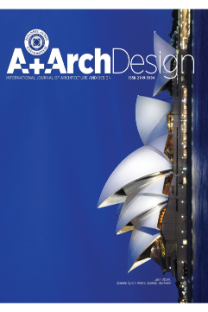The Evaluation of The Effect of Mass Housing Facades on Comfort Conditions: The Example of Ataköy
Houses are spaces in which occupants spend long hours and expect to have the right comfort conditions (thermal, visual, acoustic). When no measures or not enough measures are taken in the layout, façades of residential houses are expected to show the required performance. A large portion of increasing energy consumption as a result of technological developments and industrialization is for heating and cooling residential buildings and residential buildings are increasingly located more in areas that are exposed to high external noise levels which all increase the level of importance for facades to provide thermal and acoustic comfort conditions. Ataköy region is an example of a residential area that shows the effects of developments in our country with changes in architectural approaches and construction technologies since its establishment. The objective of this study is to assess facade performances of public housing buildings which were built with different facade characteristics in different periods in Ataköy for thermal and acoustic comfort and energy consumption. To do this, the efficiency of the facade systems of the residential buildings which were built with different materials and facade systems and similar block layout in 1950s and 1980s in a neighbourhood with high traffic noise in Ataköy was assessed. Heating and cooling energy loads and thermal performance evaluation of selected buildings were calculated by Design Builder simulation program and noise reduction values of facades were calculated by KS program. The comparative results of the changes in thermal and acoustic comfort and energy consumption in the buildings used in brick and concrete facade panels were assessed using charts.
Keywords:
Building envelope, noise control energy efficiency,
___
- [1] Keleş, R., (1978). Konut sorunları ve politikası. F. Yavuz, R. Keleş, & C. Geray, Şehircilik (pp. 587-721). Ankara: A.Ü. Siyasal Bilgiler Fakültesi.
- [2] Tekeli, İ., (1996). Yetmiş Yıl İçinde Türkiye’nin Konut Sorununa Nasıl Çözüm Arandı. Konut Araştırmaları Sempozyumu, Ankara: T.C. Başbakanlık Toplu Konut İdaresi. 1-10.
- [3] Sezen, F. (1989). Ataköy’de Tekrarlayan Üretim Uygulaması Faaliyetlerinde İş Akışı İncelenmesi, Ataköy Toplu Konut Uygulamalarının Değerlendirilmesi Panel Bildirileri, İstanbul Teknik Üniversitesi
- [4] Manioğlu, G. (2011). Enerji etkin tasarım ve yenileme çalışmalarının örneklerle değerlendirilmesi, Tesisat Mühendisliği Dergisi, (126).
- [5] IEA. (2018). International Energy Agency, Erişim 27 Nisan 2021, https://www.iea.org/data-and-statistics?country=WORLD&fuel=Energy%20supply&indicator=TPESbySource
- [6] World Health Organization, (2018). Environmental noise guidelines for the European Region
- [7] Koçlar Oral, G., Manioğlu, G. (2010). Bina cephelerinde enerji etkinliği ve ısı yalıtımı, 5.Ulusal Çatı & Cephe Sempozyumu, İzmir: Nisan 15 -16.
- [8] Ünver, R., Gedik, Z.,G., Akdağ Y.,N, Öztürk, D., L., Yüksel, K.,Z., Çelik, Ö., F., Sakınç, E. (2005). Optimum Yapı Kabuğu Tasarımında Yararlanılabilecek Bir Yaklaşım: Büro Yapıları Örneği, Mimarist, 4, 120-128.
- [9] Designbuilder Software. (t.y). Erişim: 31.03.2021 http://designbuilder.co.uk
- [10] TS825. (2013). Binalarda Isı Yalıtım Kuralları. Türk Standardları Enstitüsü, Ankara
- [11] Kalksandstein Schallschutzrechners. (t.y). Erişim: 31.03.2021 https://www.kalksandstein.de/bv_ksi/home?page_id=10
- [12] Çevre Koruma Müdürlüğü. (2015). Gürültü haritaları. Erişim tarihi 10 Ocak 2019. https://cevrekoruma.ibb.istanbul/gurultu-haritalari/
- [13] Binaların Gürültüye Karşı Korunması Hakkında Yönetmelik. (2017). T. C. Cumhurbaşkanlığı Resmi Gazete. 30082, 31 Mayıs 2017.
- [14] Şenkal Sezer,(2003). Giydirme Cephe Kavramı, Mimarlık Dergisi , 311.
- ISSN: 2149-5904
- Başlangıç: 2015
- Yayıncı: İstanbul Aydın Üniversitesi
